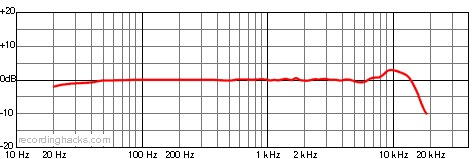 Soundelux E250
Soundelux E250
Cardioid Tube Condenser Microphone
The Soundelux E250 was designed as a vocal mic. It was a fixed-cardioid version of the company’s flagship Elux251, stripped of features not essential to vocal tracking, and equalized specifically for the human voice.
Soundelux
Classic tube condenser microphones were never meant to be placed within six-inches of loud vocalists, yet producers and engineers love the presence, size and low-frequency boost this adds to their artist’s sound. However the proximity effect’s low-frequency build up and the upper mid-range/treble tilt of many popular old classic cardioid microphones can also work counter-productively, causing problems requiring extensive outboard signal processing. The Soundelux E250 was created to address these issues.
Basically the 250 is a condenser version of the 251 optimized for close vocals and includes all our modern enhancements with lower noise and distortion specs…
The new E250 has a broader cardioid polar pattern than our standard 251, which is fairly directional up close, and that makes it much more forgiving [in close-miking applications].
The E250 used the same CK12-style capsule as the Elux251. The capsules are believed to have been built by MBHO in Germany. The edge-terminated, 6-micron diaphragm measured ~25mm in diameter, mounted in a brass ring.
EQ Magazine
Instead of the 6072 tube used in the ELUX and the original ELA M251 Es, the E250 uses an EF732 tube. The capsule is similar, and is still based on the classic CK-12 design, but was modified somewhat to widen the cardioid pattern and raise the frequency of the proximity boost.
MIX
I set up a Neumann M149 and the e250 side-by-side and had a male vocalist sing a couple of lead vocal passes into each separately, about four inches away straight into the capsules… The e250’s shifted proximity caused a much thicker lower midrange that greatly enhanced my singer’s sound — better than any EQ and/or compressor. The e250’s smoother upper midrange seemed very natural-sounding, while the M149 sounded a little harsh and harder in those frequencies. I got a very impressive and big vocal sound using the e250, but I could tell that I might have to add more upper midrange EQ during the mix — an option that I prefer. I didn’t notice any distortion, ‘S’ problems or high-frequency loss with slight head movement with the e250…
David Bock, engineer and co-founder of Soundelux Microphones, has produced a worthy variant of his ELUX 251. The e250 amazed me with its huge and impressive sound on everything recorded with it and is well worth the $3,000 investment.
Within 18 months of its release, the E250 was replaced in the Soundelux lineup by the E251C, which incorporated a 2-position EQ switch and a different tube, but which was also intended as a close vocal mic.
Permalink: Soundelux E250
The mic was released in 2004.
Specifications
| Frequency Response - CardioidClick Graph to Compare! |
|---|
 |
| Pickup Patterns | Pads & Filters |
|---|---|
|
Cardioid
(27 mV/Pa; 20 - 18,000 Hz) |
|
| Capsule Dimensions | Impedance | SPL/Noise |
|---|---|---|
| Diaphragm diameter: 25mm |
200 Ohms (Low) | Max SPL: 109 dB |
| Weight | Length | Max Diameter | Interface(s) |
|---|---|---|---|
| 695g (24.52oz) | 203mm (7.99'') | 52mm (2.05'') |
|
| Power Specifications |
|---|
|
Did we get anything wrong on this page? Please let us know!


